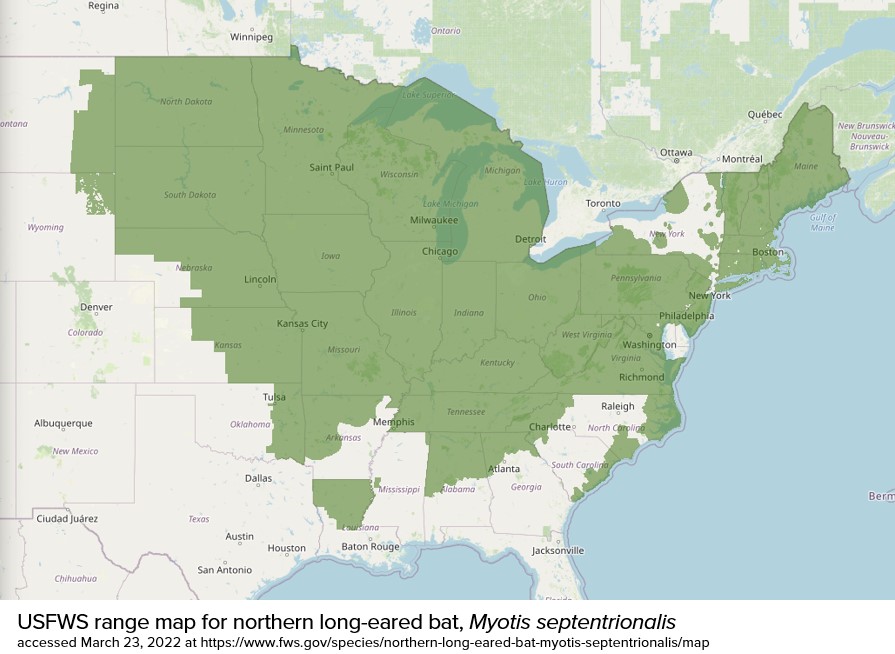On March 23, 2022, the U.S. Fish and Wildlife Service (USFWS) published a proposed rule to relist the northern long-eared bat (Myotis septentrionalis) from threatened to endangered. A relisting has been expected for some time following a court ruling in 2020. Comment on the proposed rule ends on May 23, 2022 and we expect a final rule to be published later this year.
The proposed rule, if finalized, will:
- Relist the northern long-eared bat from threatened to endangered, indicating that the species is more at risk than initially thought.
- Remove the 4(d) rule that provided leeway regarding activities that may affect the species.
- Prohibit the incidental take, or removal or destruction of habitat (among other things) outside of Endangered Species Act Section 7 or Section 10 authorization. This was not necessarily the case under the previous 4(d) rule.
The primary habitat during the spring, summer, and fall months for the northern long-eared bat consists of trees and forested areas. Any project that proposes to remove trees may be affected by this proposed rule.

